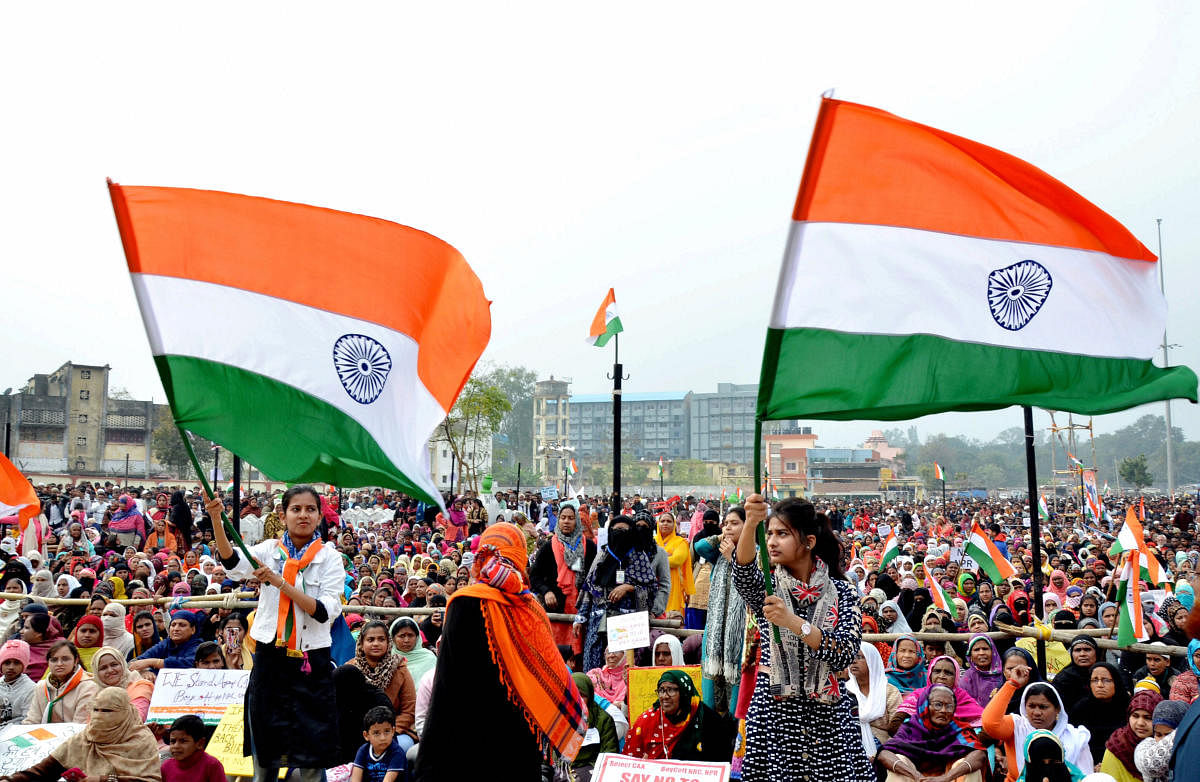Jawaharlal Nehru, while addressing an open session of the All India Congress Committee in New Delhi in May 1958, said that the “communalism of the majority is far more dangerous than the communalism of the minority.” He reasoned that such communalism “wears the garb of nationalism.” “We have thus communalism ingrained in us and it comes out quickly at the slightest provocation and even decent people begin to behave like barbarians when this communalism is aroused in them.”
To the prophets of doom desperate to prise open the communal fault lines, who are so bent on reversing Nehru’s India, the biggest victory is their ability to scrub out the subterranean communalism that remained hidden for so many years. While that gives reason to suspect that our secularism did never take firm root, one of the major changes (of many) that has taken place, post-2014, and particularly post-2019 Lok Sabha elections, in the social milieu is a process of sharp polarization and majoritarian communalization.
While much has been written on the secularity of the State and the ideology of secularism in earlier debates and discourses, little emphasis was laid on the secularisation of Indian civil society. Achin Vanaik (The Rise of Hindu Authoritarianism: Secular Claims, Communal Realities, 2017) rightly predicts that that the longer-term battle to defeat communalisms and fundamentalisms must be waged on the terrain of civil society, where the democratic process must be stabilized and secularization deepened.
The growing communalisation of Indian civil society also demands special scholarly attention. The process of communal incentivization in the air stands in sharp contrast to a system of governance based on Nehru’s ideas of democratic socialism and secularism, among other things, popularly known as the Nehruvian Consensus. That it has irretrievably collapsed is a moot point; but the Hindutva project that seeks to replace it has found the point where it was at its wobbliest: there was a weak consensus on Nehruvian secularism right from the beginning. Majoritarian Congress secularism could never be taken as true secularism.
This foundational weakness and the collective corpus of pre- and post-Partition communalism – the riots, the mass-migrations, dispossessions, rapes and killings – might help explain why apparently peaceable people never known to harbour so much cross-generational hatred are showing their colours, inasmuch as in moments of animation they are turning out to be communalists in disguise. On observing people who support the ruling dispensation for abrogating Article 370, and those who don’t, who had earlier supported demonetization and who hadn’t, and finally people who side with CAA-NRC-NPR against those who’re vehemently opposed to it, one could have presumed them to be argumentative Indians and the entire exercise as a perfectly normal sign of a vibrant democracy. But when the popular argument gets reduced to considering Muslims as second-class citizens, refusing them their basic entitlements, or worse, teaching them “a lesson” or evicting them, the deeper malaise – majoritarian communalism – does not remain undisclosed any longer. The real trouble is that the disruptive and socially divisive policies are creating deep fissures and creating unbridgeable animosities right up to our drawing rooms. Worse, they’re becoming popular. They are meant to do exactly that.
“Nothing was more natural for us,” recounted Nirad C Chaudhuri in his book Hinduism: A Religion to Live By, “than to feel about the Muslims the way we did” and how his teachers in school impressed upon their students that Islam spread by force, Muslims abducted women, and their rulers desecrated temples and forcibly converted Hindus to their faith. This demonization that continues to this day has rarely been forcefully countered. Such apocalyptic descriptions were not uncommon following the mass political violence of late 1946, when the Hindu Mahasabha’s movement for a “Hindu homeland” resonated powerfully with those Hindus fearful of the prospect of being a permanent minority in a Muslim majority nation-state.
“Only the triumph of Hindutva can help to create,” wrote no irascible Muslim-baiter, no Savarkar or Golwalkar, but Girilal Jain, the influential editor of The Times of India from 1978 to 1988, in his 1994 book The Hindu Phenomenon, “a milieu which obliges them to try and overcome the inertia of tradition reinforced by the Ulama.” Now, though the air is rife with calls for protest against CAA-NRC-NPR, and new battle lines are being drawn, there is little occasion for cheer because India’s long-held secular assumptions are now in question. It is not pretty to see that the government of a technically secular State can manage to enact a law that is manifestly prejudiced against Muslims with a stubborn sure-footedness that comes out of a conviction of being backed by a vast majority of people. If one wonders at the enormous clout of a duopoly that hold an entire nation of more than 1.3 billion people to ransom, the real cause of worry is the popular and institutional support they command. Therefore, whether the unconstitutionality of the CAA would automatically attract its nullification, and be interpreted so, by the highest court is not as certain as it once was when we lived in less partisan times.
What is at stake? The popular opinion that India had been a secular country because most Hindus had been secular-minded – an idea consistent with the Hindu Right locates secularism within Indian ideas of sarva dharma samabhava (all dharmas or religious beliefs being equal to or harmonious with each other) highlighting the concept of ‘dharma’ as evidence of India’s essential religious toleration and propensity for secularism.
Historian Partha Chatterjee once expressed doubt whether secularism as an ideology will ever combat the problem of majoritarian communalism. It will not. Only the people can combat it in practice and precepts, in crisis and out of it. That’s precisely why the protests at the Jamia Milia Islamia (JMI) University, or Shaheen Bagh, or at the Jawaharlal Nehru University (JNU) and elsewhere are so important to save the soul of India. India must win this game of numbers to win the millennial battle.
